Abstract
The incidence of diabetes mellitus is increasing at an alarming proportion and majority of them are type-2 (Non-insulin dependent) diabetes mellitus. Two major concern are that much of this increase in diabetes will occur in developing countries due to population growth , ageing, unhealthy diets, obesity and sedentary life-styles and that there is a growing incidence of type-2 (Non-insulin dependent) diabetes mellitus which accounts for about 90% of all cases at a younger age. The objective of this study was to determine the prevalence of diabetes mellitus in consideration of age, sex, and socioeconomic status and also determine the present therapeutic management of diabetes and related complication having by the patients. In this survey a cross sectional observational community based study was conducted from August 2 to October 10, 2019 in Chittagong medical college hospital of Bangladesh. Among 100 diabetic hospitals going participants of different aged whose are visited to Chittagong medical college hospital to diagnosis diabetes were considered for the study. From all of 100 participants data were collected by using questionnaires. The questionnaire included socio-demographic data like- sex, age group, marital status, educational level and family history of diabetes etc. Clinical data included possible risk factor such as cardiovascular problem and obesity list of the all medication are also taken. I have taken the interview of 100 diabetes patients as a result among them 29% are male patients and 61% are female patients. So it is seen that female are more affected than male in both type-1 (insulin dependent) and type-2 (non-insulin dependent) diabetes mellitus patients .from the survey work it was found that increase of type-2 (Non-insulin dependent) diabetes mellitus patients 43% use metformin as oral hypoglycemic drugs 23% glimepride + metformin, 14% use gliclazide, 10% use linagliptin and 6% use sitagliptin + metformin .in case of insulin dependent (Type-1) diabetes mellitus 26% diabetes patients encounters were treated with insulin. In case of diabetes mellitus among 100 patients 32% are suffered from blood pressure, 33% are suffered from joint pain, 30% are suffered from Retinopathy, 15% are suffered from Back Pain, 7% are suffered from Foot Pain, 10% are suffered from Itching, 7%% are suffered from Frequent Urine, 20% are suffered from Chest Pain, 3%% are suffered from Arthritis and 9% are suffered from Allergy. From the survey work, it was seen that mainly three category patients were observed and 8% were low status, 80% people were medium status and 12% people were high status out of 100 diabetes patients as a sample.
Keywords: Diabetes Mellitus; Type 1; Type 2; Survey; Chattogram
Introduction
Diabetes is one of the fastest growing, most common chronic and deadliest diseases especially in the developed and developing countries like Bangladesh. About 415 million people had diabetes in the world and number will be rise to 642 million in 2040. Globally, 1 per 11 adults has diabetes and a whopping 12% of global health expenditure is spent on diabetes. Both type I and type 2 diabetes are increasing worldwide in people, especially youth [1]. So it is one of the major public health Problem. It causes several other diseases, many complications, increases mortality and finally affects the quality of life [2]. Type 1 or insulin dependent diabetes is a heterogeneous disorder characterized by complete or partial destruction of pancreatic beta cells, culminating in absolute insulin deficiency. The majority of cases are attributable to an autoimmune-mediated destruction of beta cells while a small minority of cases results from an idiopathic destruction or failure of beta cells (type 1b). Type 1 diabetes accounts for 5-10% of the total cases of diabetes [3]. Type 2 or non-insulin-dependent diabetes is frequent in developed and developing countries and type 2 diabetes pose a major health threat among these countries [4]. Diabetes mellitus or type 2 Diabetes is a clinical syndrome characterized by a disorder in the metabolism of carbohydrates, lipids, and amino acids, either as a result of decreased insulin secretion or due to progressive decline in β-cell function and chronic insulin resistance [5]. Epidemiological studies has said that about 90% to 95% of all diagnosed diabetes cases are type 2 diabetes and genetic factors obesity, age and sex are major contributing factors of this clinical syndrome [6]. Environmental factors like high calorie intake and low physical activity are also responsible. Diabetes mellitus is a metabolic ailment, besides medicinal drugs patient’s diabetes awareness and education for embracing vital life style changes are also necessary in order to ensure proper control and treatment of diabetes mellitus. It is not unexpected that patients having better knowledge regarding diabetes mellitus can control blood glucose level in a more effective and efficient manner [7]. Controlling this disease is mainly dependent on patient’s capability to ensure self-management ineach day of living. So, patient’s knowledge and education is recognized as a vital element to ensure proper management of diabetes [8]. Proper education regarding diabetes mellitus in addition with enhancements in understanding, attitudes and abilities, leads to improved management of the disorder, and is broadly recognized as a vital part of complete diabetes mellitus treatment and control [9]. On the contrary, less knowledge as well as consciousness may cause expanded vulnerability to the occurrence of diabetic problems along with increased rate of healthcare charges among sufferers with diabetes mellitus [10].
Materials and Methods
Study design and study areas
A cross sectional observational community based study was conducted from August 2 to October 10, 2019 in Chittagong medical college hospital of Bangladesh. Among 100 diabetic hospitals going participants.
Study Population
About 100 participants of different aged groups of Chittagong metropolitan and surrounding areas whose are visited to Chittagong medical college hospital to diagnosis diabetes were considered for the study.
Data Collection
Data were collected by using questionnaires. The questionnaire included socio-demographic data like- sex, age group, marital status, educational level and family history of diabetes etc. Clinical data included possible risk factor such as cardiovascular problem and obesity list of the all medication are also taken.
Results and Discussion
This survey work reflects the overall figure of age, gender, related complications and progressive status of diabetes patients in Chittagong medical college hospital. I have taken the interview of 100 diabetes patients as a result among them 29% are male patients and 61% are female patients.
Conclusion
The present studies carried out in the survey were performed to evaluate the management, control, complication profile and treatment strategies in patients with diabetes and to determine what extent management of diabetes in a tertiary-care diabetes hospital in Chittagong, Bangladesh adhered to current guidelines. Diabetes is a chronic progressive disease with elevated levels of blood glucose. It may experience many serious and long-term complications. From the survey it has been observed that women are more prone to diabetes compared to men this is 61%. In this age distribution, it is observed from above figure 51-60 aged peoples are mainly suffered from the diabetes mellitus (Table 1-5). Uses of Non- insulin dependent (Type- 2) diabetes mellitus patients 43% use metformin as oral hypoglycemic drugs (Figure 1-5). It is significant use of oral hypoglycemic drugs. And both men and women suffer with high blood pressure, joint pain, retinopathy and chest pain the most due to diabetes. Good management using a standardized protocol can potentially prevent these complications and reduce the premature death from diabetes. Therefore, there is need for increased effort towards developing and making education programs focusing on empowering the persons with diabetes, not only to provide them information but also the ability and empowerment to change knowledge and attitude into practice. Also development and implementation of public health programs should be taken. It is hoped that these findings have major implication for the design of patient’s education programs.
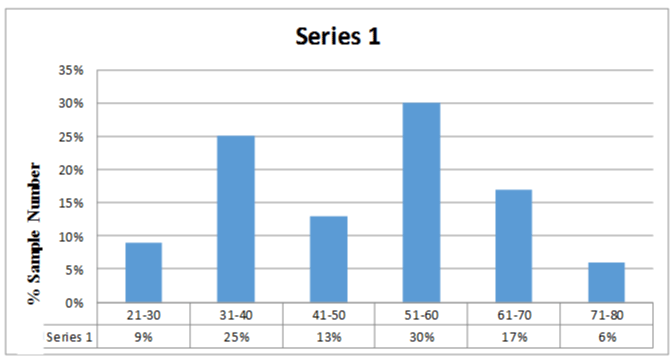
Figure 1: Age distribution of diabetes patients.
In this age distribution, it is observed from above figure 51-60 aged peoples
are mainly suffered from the diabetes mellitus also seen that 9%, 25%, 13%,
30%, 17% and 6% population in 21-30, 31-40, 41-50, 51-60, 61-70 and 71-
80 years are affected by diabetes mellitus respectively out of 100 samples.
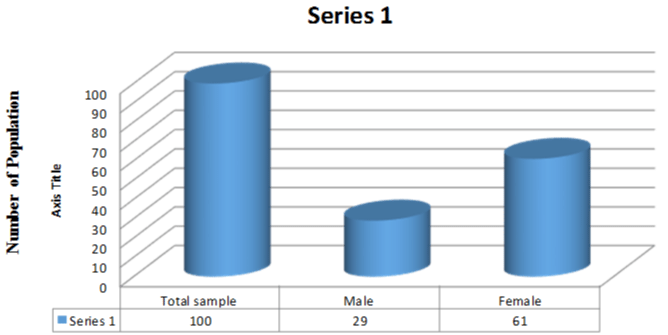
Figure 2: Sex distribution of diabetes patients.
In case of male, I observed that about 29% population was affected by
diabetes and about 61% female population was affected by diabetes out of
100 samples.
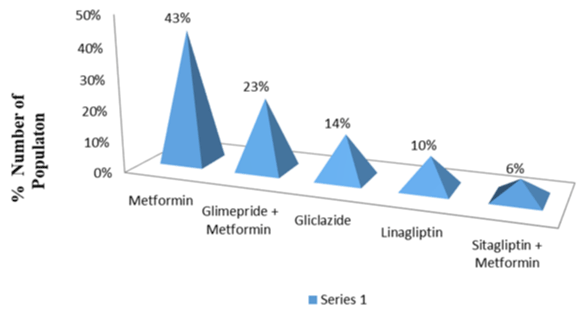
Figure 3: Drug use pattern of diabetes patients.
Uses of Non- insulin dependent (Type 2) diabetes mellitus patients 43% use
metformin as oral hypoglycemic drugs 23% glimepride + metformin, 14%
use gliclazide, 10% use linagliptin and 6% use sitagliptin + metformin .in
case of insulin dependent (Type 1) diabetes mellitus 26% diabetes patients
encounters were treated with insulin.
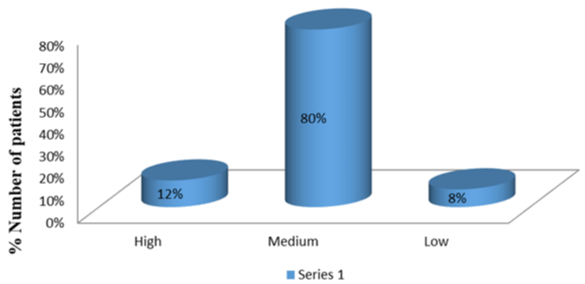
Figure 4: Socio- economical condition of diabetes patients.
It was seen that mainly three category patients were observed and 8% were
low status, 80% people were medium status and 12% people were high
status out of 100 diabetes patients as a sample.
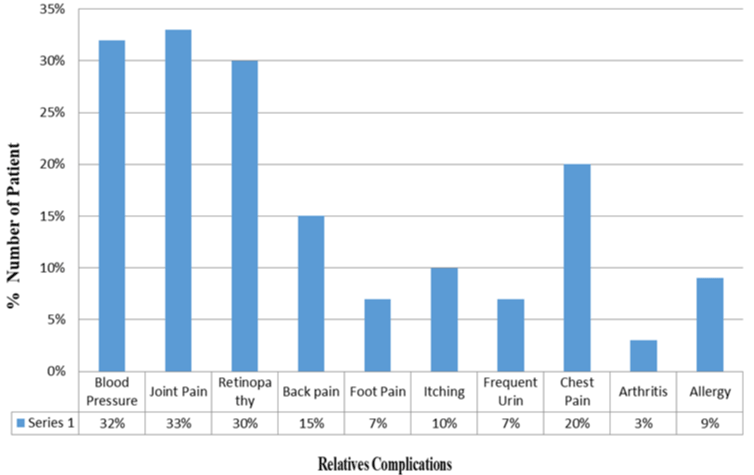
Figure 5: Diabetes Mellitus Related Complications.
In case of diabetes mellitus among 100 patients 32% are suffered from
blood pressure, 33% are suffered from joint pain, 30% are suffered from
Retinopathy, 15% are suffered from Back Pain, 7% are suffered from Foot
Pain, 10% are suffered from Itching, 7%% are suffered from Frequent Urine,
20% are suffered from Chest Pain, 3%% are suffered from Arthritis and 9%
are suffered from Allergy.
Age(Year)
% Sample Number
21-30
9%
31-40
25%
41-50
13%
51-60
30%
61-70
17%
71-80
6%
Table 1: Age distribution of diabetes patients.
Sex
Number of Population
Total sample
100%
Male
29%
Female
61%
Table 2: Sex distribution of diabetes patients.
Drug use
% Number of population
Metformin
43%
Glimepride + Metformin
23%
Gliclazide
14%
Linagliptin
10%
Sitagliptin + Metformin
6%
Table 3: Drug use pattern of diabetes patients.
Status
% Number of patients
High
8%
Medium
80%
Low
12%
Table 4: Socio- economical condition of diabetes patients.
Relative Complications
% Number of patients
Blood Pressure
32%
Joint Pain
33%
Retinopathy
30%
Back Pain
15%
Foot Pain
7%
Itching
10%
Frequent Urination
7%
Chest Pain
20%
Arthritis
3%
Allergy
9%
Table 5: Diabetes Mellitus Related Complications.
References
- Lipton RB. Incidence of diabetes in children and youth tracking a moving target. JAMA. 2007; 297: 2760-2762.
- Van Belle TL, Coppieters KT, Von Herrath MG. Type 1 diabetes: etiology, immunology, and therapeutic strategies. Physiological reviews. 2011; 91: 79- 118.
- Wild H, Roglic G, Green A, Sicree R, King H. Global prevalence of diabetes estimates for the year 2000 and projections for 2030. Diabetes Care. 2004; 27: 1047-1053.
- Kudva YC, Butler PC. Insulin secretion in type-2 diabetes mellitus. In Clinical Research in Diabetes and Obesity. volume 2, Diabetes and Obesity. 1997; 119-136.
- Niti S, Amrit V, Gupta BP, Jasdeep S. Prevalence and Risk Factors of Diabetes Mellitus among Adults residing in practice Area of a Teaching Hospital in Punjab. Health line Journal. 2015; 6: 57-62.
- Hussain A, Vaaler S, Sayeed MA, Mahtab H, Ali SK, Khan AA. Type 2 diabetes and impaired fasting blood glucose in rural Bangladesh: a population-based study. The European Journal of Public Health. 2006; 17: 291-296.
- Diagnosis and classification of diabetes mellitus. Diabetes care. 32: S62- S67Dabelea D, Bell RA, D’Agostino RB Incidence of diabetes in youth in the United States. JAMA. 2009; 2716-2724.
- Rahman MS, Akter S, Abe SK, Islam MR, Mondal MNI, Rahman JS, et al. Awareness, treatment and control of diabetes in Bangladesh: a nationwide population-based study. Plops one. 2015; 10: 0118365.
- Wang L, Gao P, Zhang M, Huang Z, Zhang D, Deng Q, et al. Prevalence and ethnic pattern of diabetes and prediabetes in China in 2013. Jama. 2017; 317: 2515-2523.
- Abdalla EA, Ahmed RF. Epidemiology of diabetes among adults in Jabra area ‘’block 14’’ in Khartoum state-Sudan: community based study. International Journal of Community Medicine and Public Health. 2017; 4: 1863-1869.
